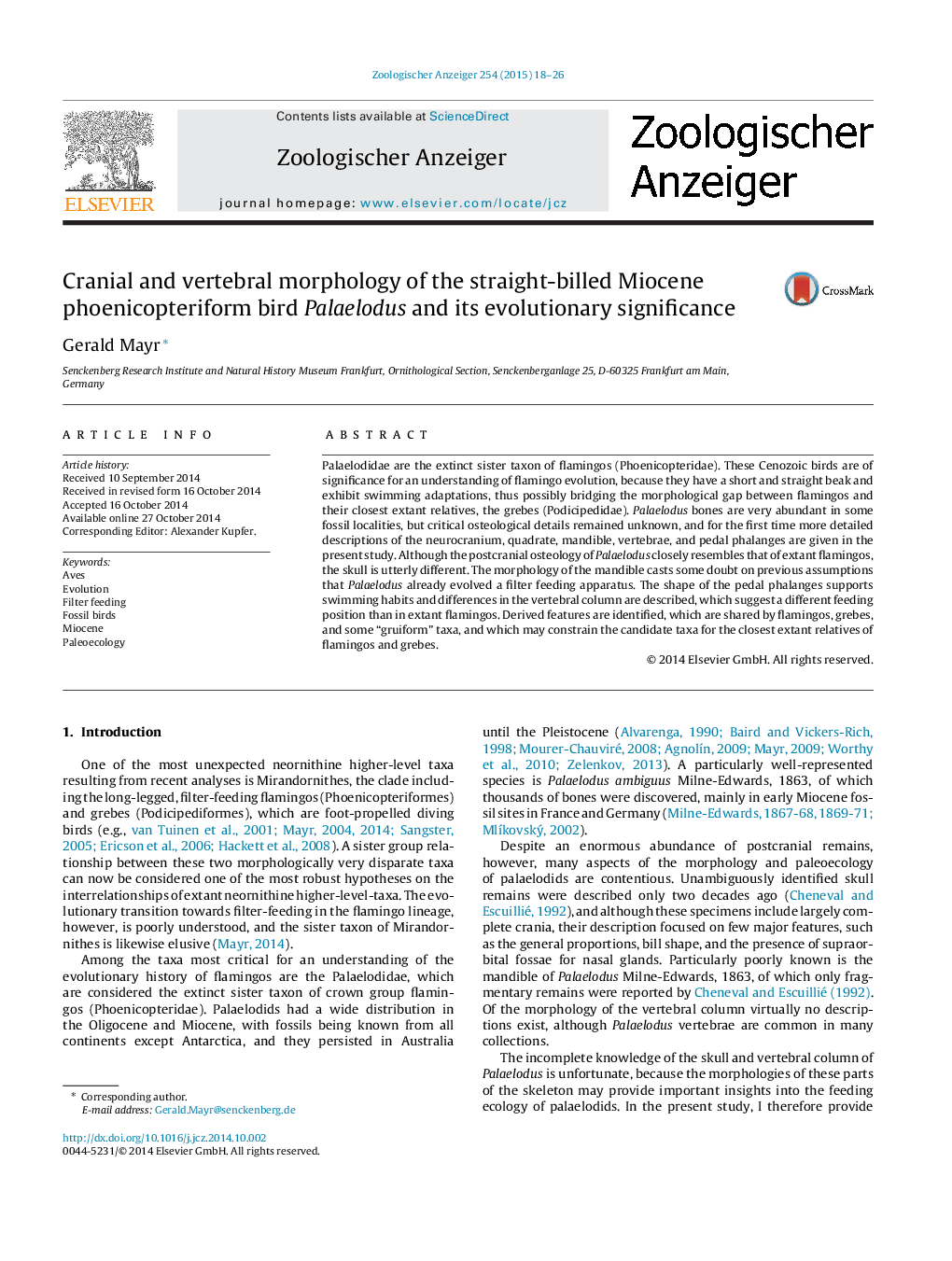| کد مقاله | کد نشریه | سال انتشار | مقاله انگلیسی | نسخه تمام متن |
|---|---|---|---|---|
| 2790567 | 1568621 | 2015 | 9 صفحه PDF | دانلود رایگان |

Palaelodidae are the extinct sister taxon of flamingos (Phoenicopteridae). These Cenozoic birds are of significance for an understanding of flamingo evolution, because they have a short and straight beak and exhibit swimming adaptations, thus possibly bridging the morphological gap between flamingos and their closest extant relatives, the grebes (Podicipedidae). Palaelodus bones are very abundant in some fossil localities, but critical osteological details remained unknown, and for the first time more detailed descriptions of the neurocranium, quadrate, mandible, vertebrae, and pedal phalanges are given in the present study. Although the postcranial osteology of Palaelodus closely resembles that of extant flamingos, the skull is utterly different. The morphology of the mandible casts some doubt on previous assumptions that Palaelodus already evolved a filter feeding apparatus. The shape of the pedal phalanges supports swimming habits and differences in the vertebral column are described, which suggest a different feeding position than in extant flamingos. Derived features are identified, which are shared by flamingos, grebes, and some “gruiform” taxa, and which may constrain the candidate taxa for the closest extant relatives of flamingos and grebes.
Journal: Zoologischer Anzeiger - A Journal of Comparative Zoology - Volume 254, January 2015, Pages 18–26